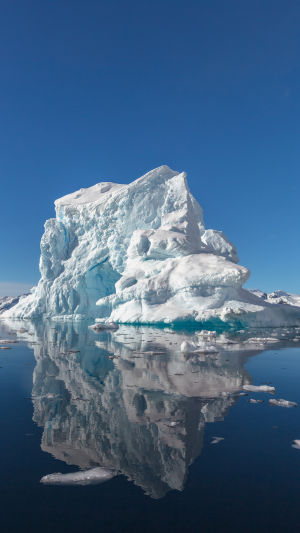If the base is successfully completed, it will become the sixth Antarctic inland base in the world.
According to Yonhap News Agency, South Korea's Ministry of Oceans and Fisheries said recently that it plans to build an Antarctic inland base by 2030 and build a 15,000-ton icebreaking research vessel by the end of 2026.
If the base is successfully completed, it will become the sixth Antarctic inland base in the world. At present, there are already bases established by the United States, Japan, France, Italy, and China in the Antarctic inland area. If the 15,000-ton ice-breaking research vessel is also successfully completed, it is expected to help South Korea explore the Arctic.
Yonhap News Agency said that this is the first time that South Korea has formulated a series of measures for polar exploration and finalized it at a state meeting held on the same day.
What are the differences between Antarctica and the Arctic, and why do many countries go to Antarctica to build scientific stations?
The difference between Antarctica and the Arctic lies in the geographical location, longitude, and latitude, as well as the temperature and environment. Because Antarctica is an island, and the Arctic is an ocean, that's why many countries go to Antarctica to build workstations.
The most striking difference between them is their geographical location and topography. Antarctica is a continent surrounded by oceans, which is located at the southernmost tip of the earth; while the Arctic is an ocean basin surrounded by continents, which is located at the northernmost tip of the earth.
Both Antarctica and the Arctic are very cold, but the climate in Antarctica is much worse than that in the Arctic. Antarctica enjoys the extreme titles of "world cold pole", "whirlwind pole" and "world dry pole". Especially its temperature, the average annual temperature in Antarctica is -50 ° C, while the average annual temperature in the Arctic is much higher, where the temperature is -18 ° C.
We know that Antarctica has the largest ice sheet in the world, and this huge ice sheet makes it the number one "cold source" in the world. It exudes cold all day long and cools the air rapidly.
As we all know, Antarctica is a continent, surrounded by the vast Southern Ocean. Most of the time the Southern Ocean is frozen by the sea, and some even remain unmelted for many years, which greatly hinders the exchange between seawater and air, so the sea surface around the Antarctic has always maintained a low temperature.
Antarctica is a continent surrounded by oceans; the Arctic is an ocean surrounded by land. This fundamental difference makes them very different. We know that the continents absorb a lot of heat, but they also dissipate heat quickly. So, the heat storage capacity of the Antarctic continent is very poor. The Arctic is an ocean, and the heat storage capacity of seawater far exceeds that of the Antarctic continent. So, this difference in topography makes Antarctica much colder than the Arctic.
The white Antarctic ice sheet acts like a giant reflector to reflect most of the received solar radiation back into the air. The Arctic, which does not have an ice sheet the size of Antarctica, does not dissipate such a huge amount of radiant energy.
In general, the two terrains of the North and Antarctica, especially in winter, promote the northward movement of warm air from the Atlantic Ocean. It is the terrain, longitude, and latitude that determine their airflow and ocean current direction, making Antarctica and the Arctic very different.





